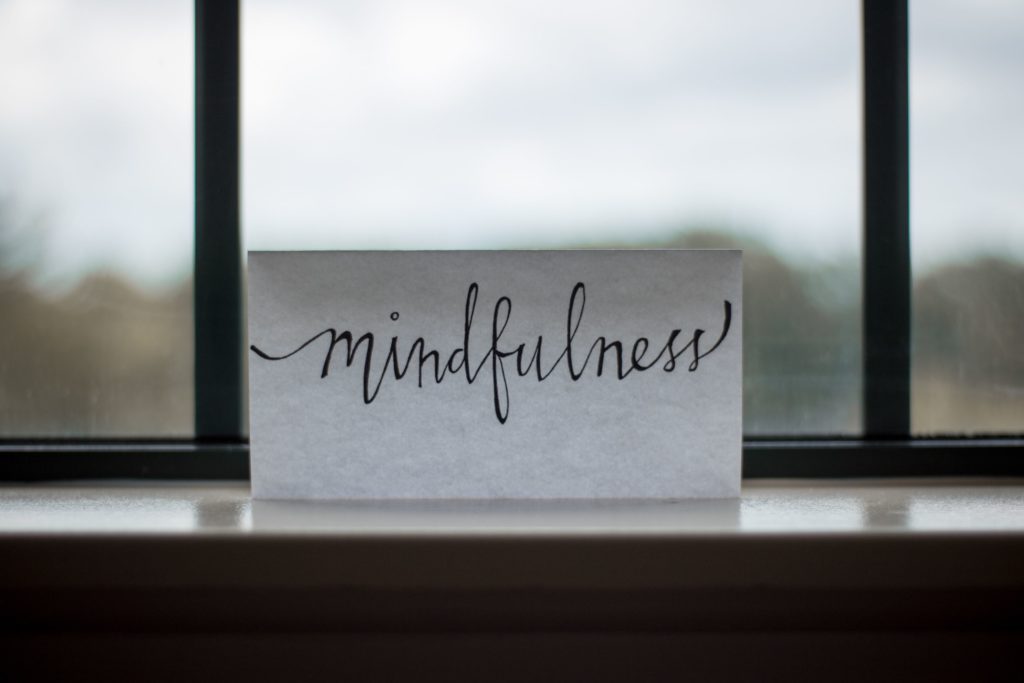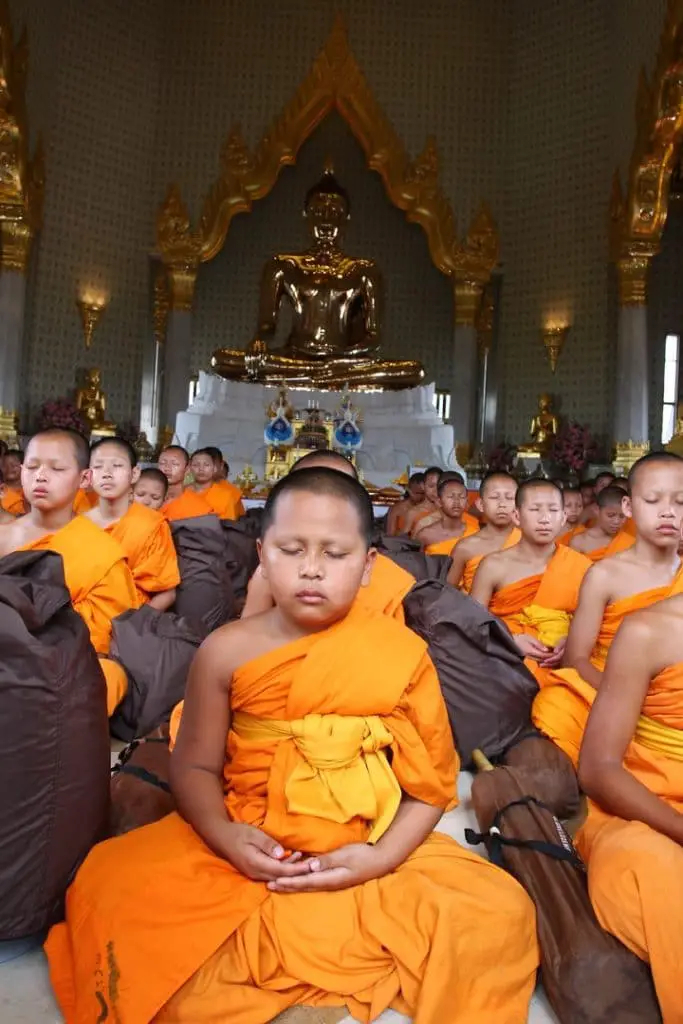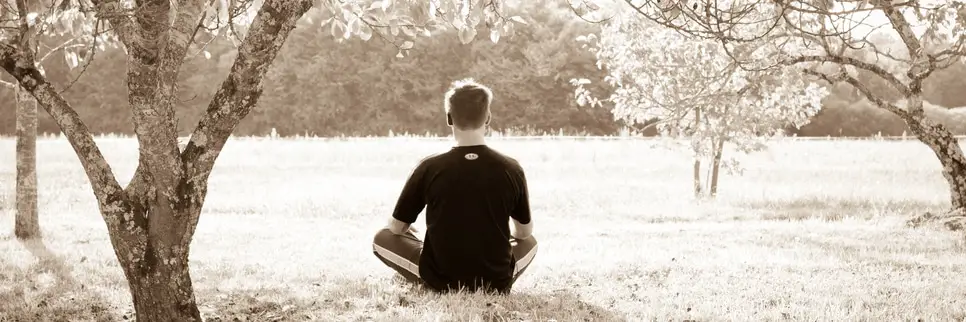What is the Difference Between Mindfulness and Vipassana
There is a lot of confusion between many terms used in the mindfulness community. There is the tendency to mix western and eastern terminology like mindfulness and vipassana.
So what is the real difference between mindfulness and vipassana? Mindfulness is the action of paying attention to whatever is happening while it is happening whereas vipassana is the cultivation of a special kind of insight in the true nature of reality.
Originally, mindfulness and vipassana were non related terms. But in the modern western teaching of mindfulness meditation, the two are almost synonymous.
As you have guessed, the answer I gave might be simple but is hiding a lot of depth. In this post I unravel all the intricacies on how these terms are interwoven and how it came to be like that.
What is Mindfulness?

In the original Buddhist texts, mindfulness is called ‘sati’ and is associated with remembering. It is a kind of remembering that is not tied to past events, but more to remembering where you are and what you are doing.
It also has the connotation with keeping something in mind. Like the breath for instance.
But the truth of the matter is that there is no formal definition of what ‘sati’ exactly is. The definition is given in an operational way as a practical means of teaching what to do in order to experience what to be (I agree, this is a convoluted sentence 🙂 ).
Let us look at the operational definition from the perspective of one of the contemporary zen masters Thich Nhat Hanh:
Breathing in, I know I am breathing in.
From a Poem by Thich Nhat Hanh
Breathing out, I know I am breathing out.
Breathing in, I notice my in-breath has become deeper.
Breathing out, I notice that my out-breath has become slower
Believe it or not, but this is the full instruction on mindfulness. Everything you need to know is in there.
Why is the operational definition of mindfulness so strange?
Now, when I first read this, I did not get the point at all. I failed to see how this could be all there is to know.
And actually, it is not. Obviously. Why would people build entire mindfulness and meditation courses?
One has to go back to the time of the Buddha to understand why the instructions were given like this.
Firstly, the instructions are what one is doing in practice. So in that sense, it is the full instruction. One becomes aware of the breath and continues to follow it. And we do this in a discerning way: when breathing in, we are fully aware of the fact that we are breathing in. This is a crucial point!
But in the days of the original Buddha, everything needed to be learned by heart. So the simpler the instructions, the better. Furthermore, most people were not educated like we are now. All the more the reason to keep the instructions simple.
Even it those days, people needed a qualified instructor to unpack the definition for them.
Unpacking the operational definition of mindfulness

So, the definition holds, but what does it really mean?
I already gave it away. The way to learn about mindfulness if by doing it. Via the experience of mindfulness.
So, what do we need to do
- Sit down
- Notice the breath
- Notice whether we breath in or out when we do this
- If the breath becomes slower or calmer, we notice this fact also
What is not said explicitly, is that our minds will wander. And that when this happens we just need to come back to the breath.
The breath here is used as a gateway (if we use the words of Eckhart Tolle) to the experience of now. If you want, it is a fancy way of saying that we need to pay attention to whatever is happening right now.
The definition also points to the fact that our comprehension of ‘mindfulness’ cannot be communicated in words and furthermore will evolve over time.
Said differently, mindfulness is a state of mind that needs to be experienced and recognised by each individual and has many levels of depth to it.
Mindfulness is foundational to all forms of meditation
In the Buddhist teachings, mindfulness plays a central role. Its role cannot be over estimated. Truly in everything the Buddha taught, mindfulness is the central piece. The ingredient without none of the other pieces can really develop.
So mindfulness needs to be developed to a certain degree before any of the other techniques can be tried.
But there are different methods to develop this faculty. I gave one, but there are numerous more. The one I described earlier comes into the category of ‘shamata meditation’ or calmness meditation.
This is the form that concerns itself mainly with developing a stable mind by cultivating concentration and mindfulness. But there are others.
What is Vipassana?
So comes in vipassana.
To learn what vipassana is, we can turn to another great meditation master, S.N. Goenka.
Vipassana focuses on the deep interconnection between mind and body, which can be experienced directly by disciplined attention to the physical sensations that form the life of the body, and that continuously interconnect and condition the life of the mind. It is this observation-based, self-exploratory journey to the common root of mind and body that dissolves mental impurity, resulting in a balanced mind full of love and compassion.
S.N. Goenka
So vipassana is looking at the interconnection between what happens in our minds and what happens in our bodies. Often times the outer world is also taken into account as it is to this that our mind reacts in half of the cases.
So what do here is to look at things that happen together (events, thoughts, emotions) and how they affect one another. Out of this, we begin to see how we react habitually and this gives an opportunity to change our reaction when the situation represents itself.
So here, instead of merely observing, a discriminatory act is added to the mix. This discrimination comes from having carefully observed ours own behaviours and reactions for extended periods of time.
Is there mindfulness in vipassana?

Well yes, since without being present, we cannot observe the things that are going on inside of ourselves. We will be lost in fantasies about the future or baing busy recalling past events.
So also here, mindfulness is primary.
What is more, is that vipassana in itself is also used as a method to cultivate mindfulness.
Where we had single focus on the breath to learn about mindfulness in ‘shamata’, in vipassana the attention will be moved around the body and mind to learn more about ourselves.
Why not only practice vipassana?
If both methods lead to increased mindfulness, why then not take the high route and practice vipassana?
Well, many (like Goenka) will agree with you. But I tend to have another opinion on the question.
First of all, developing insight (vipassana) without a mind that is a bit stable is utterly impossible. That is even acknowledged in the vipassana community.
So in the beginning everybody learns basic concentration (shamata) practices. But people deviate on how far these should be carried out. The historical Buddha had tremendous deep concentration abilities called Jhana. Going into these would take us too far, but suffice to say it is very deep into the shamata territory.
The danger with concentration practices is that they tend to engender a lot of joy. And everybody agrees that this is not the road to full happiness. So people experiencing these states are not motivated any more to go for vipassana.
The conclusion is that both need to be developed, so the real question is not shamata or vipassana, but to which extend you practice the one as a support for the other as both are needed. My opinion on the matter is that in order to develop any meaningful insight, you need a substantial amount of mindfulness. And to me the best method to develop this is via concentration practices. But, as said, some of the great meditation masters disagree with me.
What is the difference between mindfulness and vipassana and why are they confused?

Now, I hope I have been able to convince you that vipassana and mindfulness are not so related as they appear to be.
As I stated in the introduction, Mindfulness is the action of paying attention to whatever is happening while it is happening whereas vipassana is the cultivation of a special kind of insight in the true nature of how we react to the world and to our thoughts.
If they are so distinct, from where does the confusion comes.
Well, the founder of modern mindfulness, Jon Kabat-Zinn, defines mindfulness in the following way:
Mindfulness is awareness that arises through paying attention, on purpose, in the present moment, non-judgmentally. I then sometimes add, in the service of self-understanding and wisdom.
Jon Kabat-Zinn
As you can see, his definition actually contains elements of both pure mindfulness and vipassana. He actually does not make the distinction between the two.
And this is also the case in the program that he created called MBSR (mindfulness based stress reduction). These types of courses are now commonly referred to as ‘mindfulness courses’.
But technically, they are vipassana courses as the main objective of the course is to develop self-understanding and wisdom (usually rooted in western psychology).
And where does meditation comes into this discussion?
As you probably noticed, I did not mention meditation a whole lot throughout this article.
It would have still complicated the discussion, but I feel I need to say a word on how it is usually used and what is meant originally.
The word meditation in the east has the connotation of cultivating something or to familiarise oneself with something.
So it is a notion that encompasses a lot of techniques to cultivate either mindfulness or insight into reality. Or other traits like loving kindness or compassion.
Meditation is the practice, mindfulness or insight are the results gained form the practice. But in the west, the term meditation and mindfulness are sometime used as synonyms.
Hi, I’m Olivier Devroede and I have been meditating seriously since 2009.
Due to the great benefits I have seen in meditating, I decided to become an MBSR trainer myself and start a blog.


